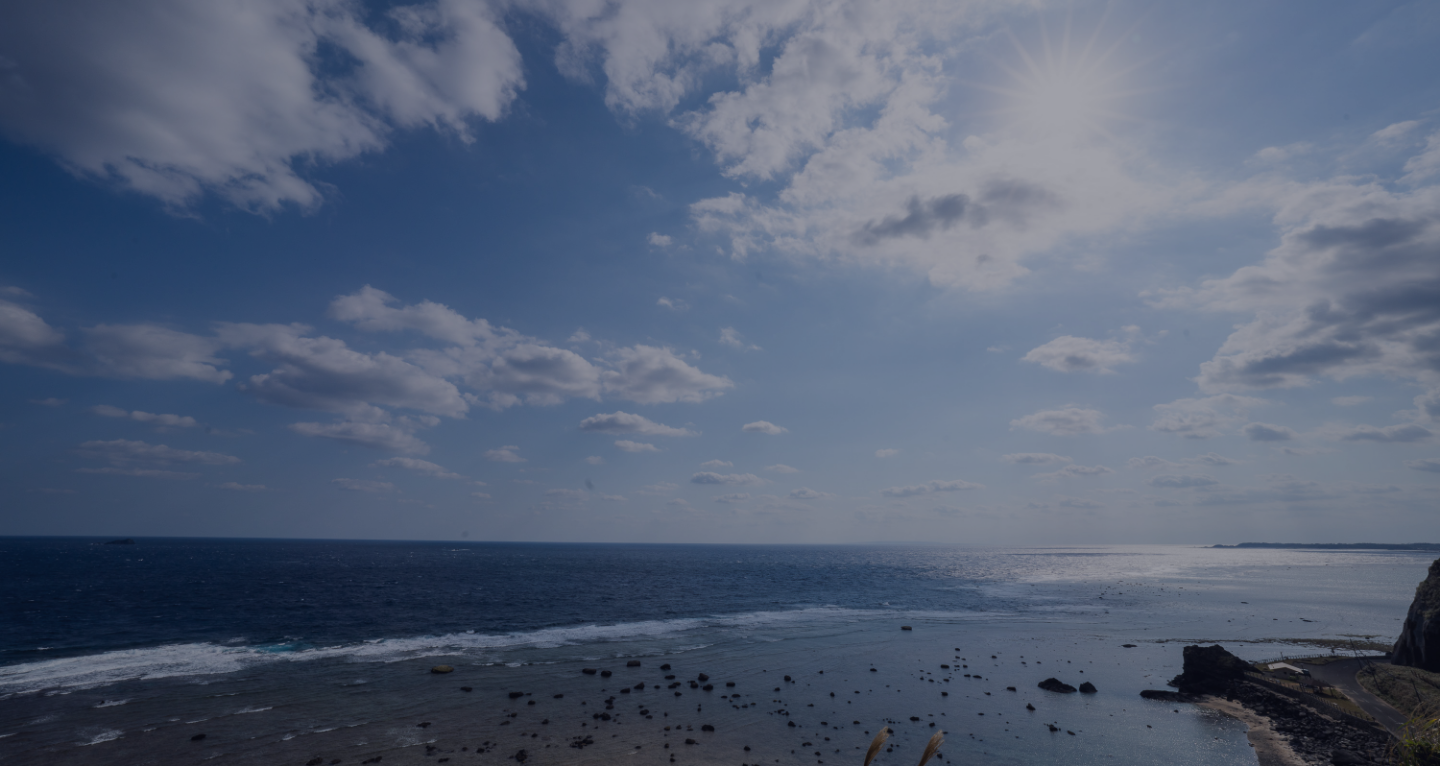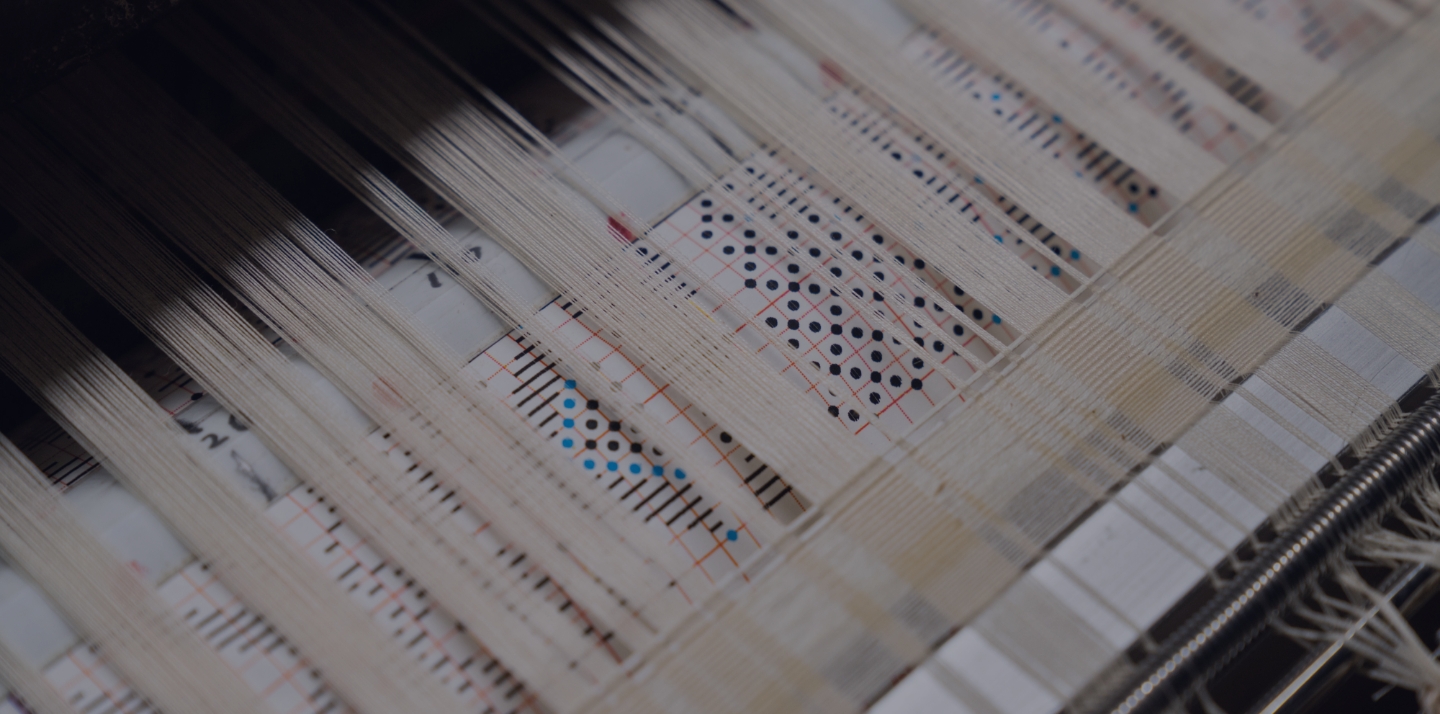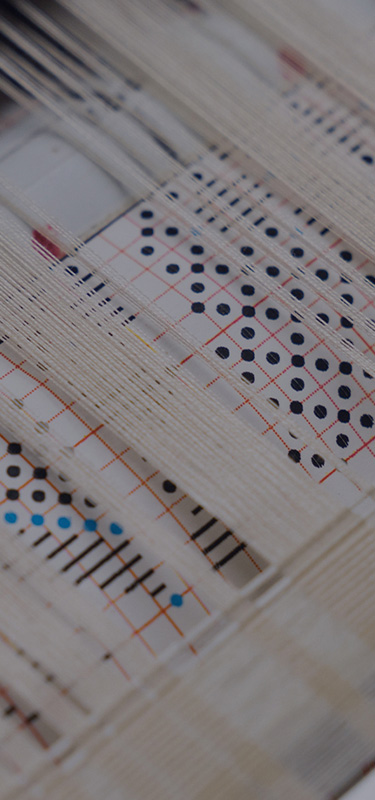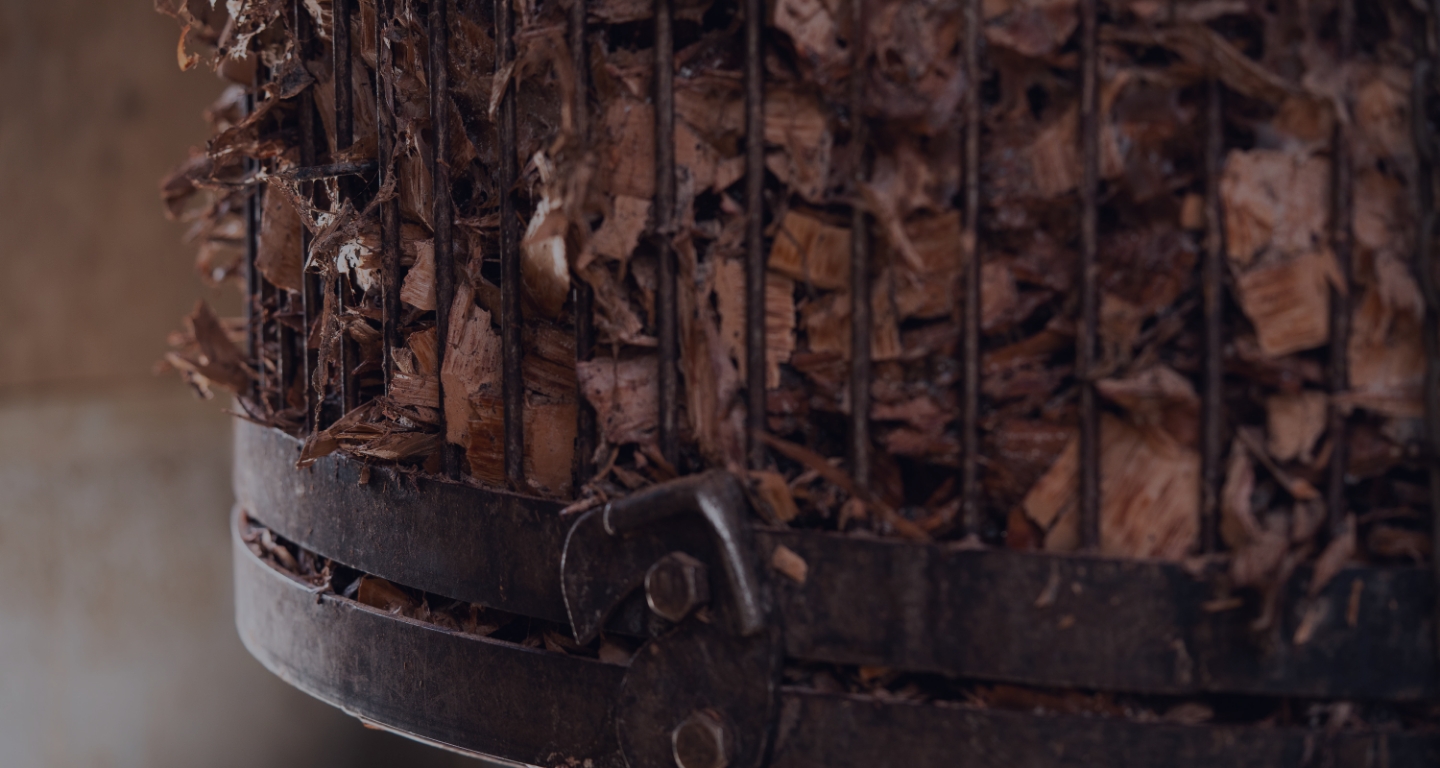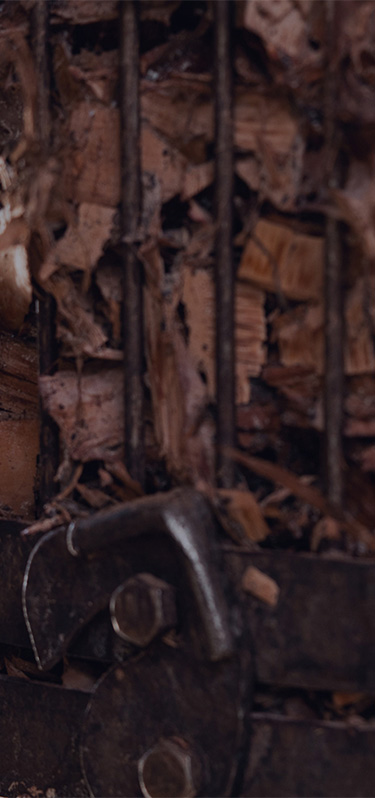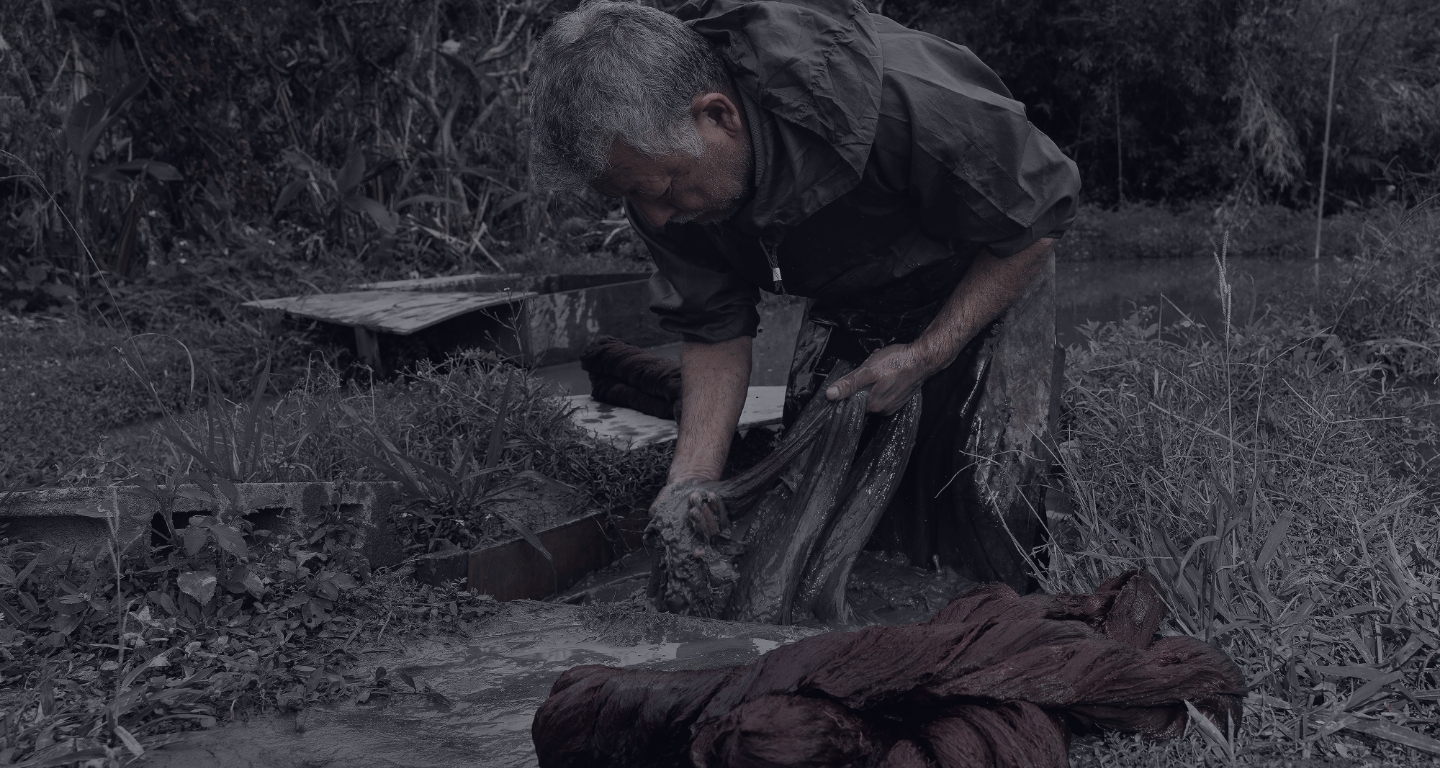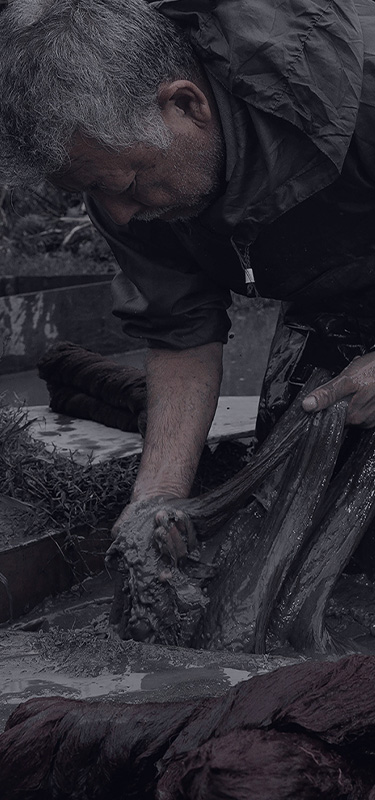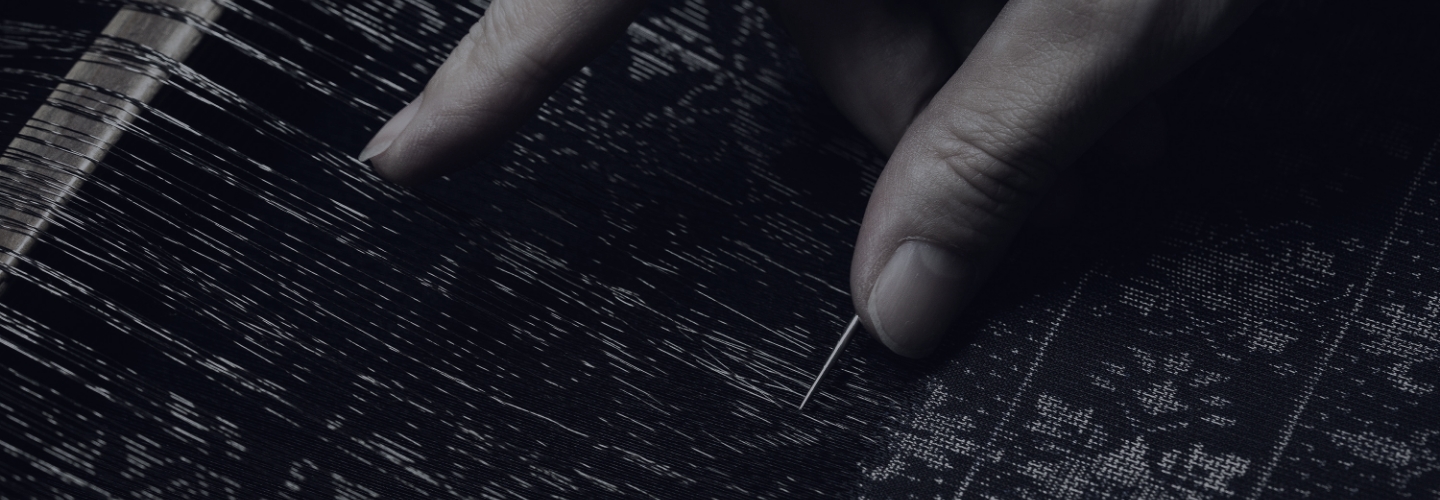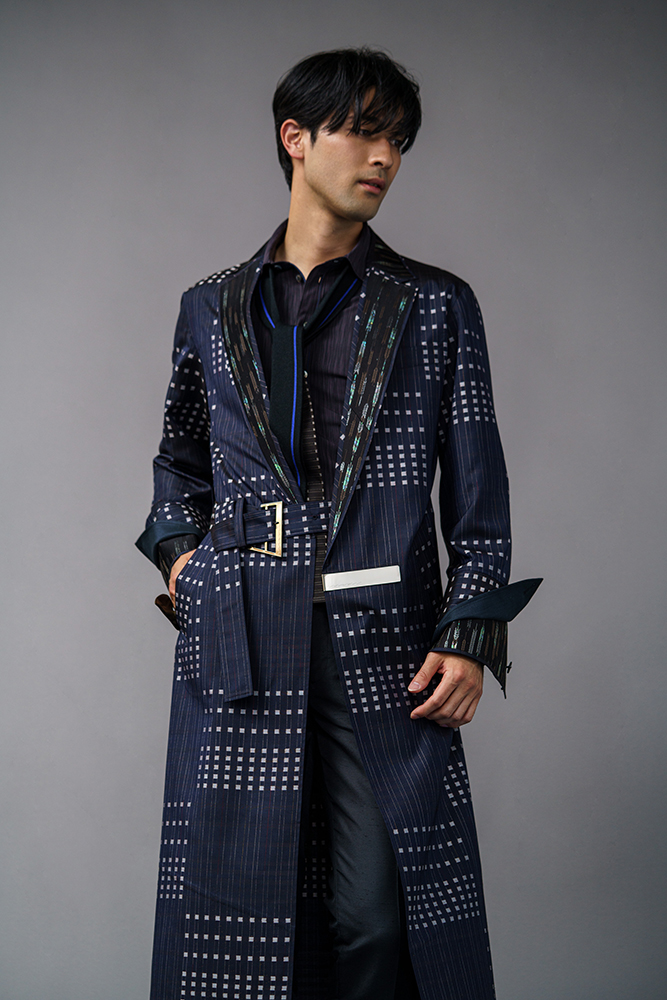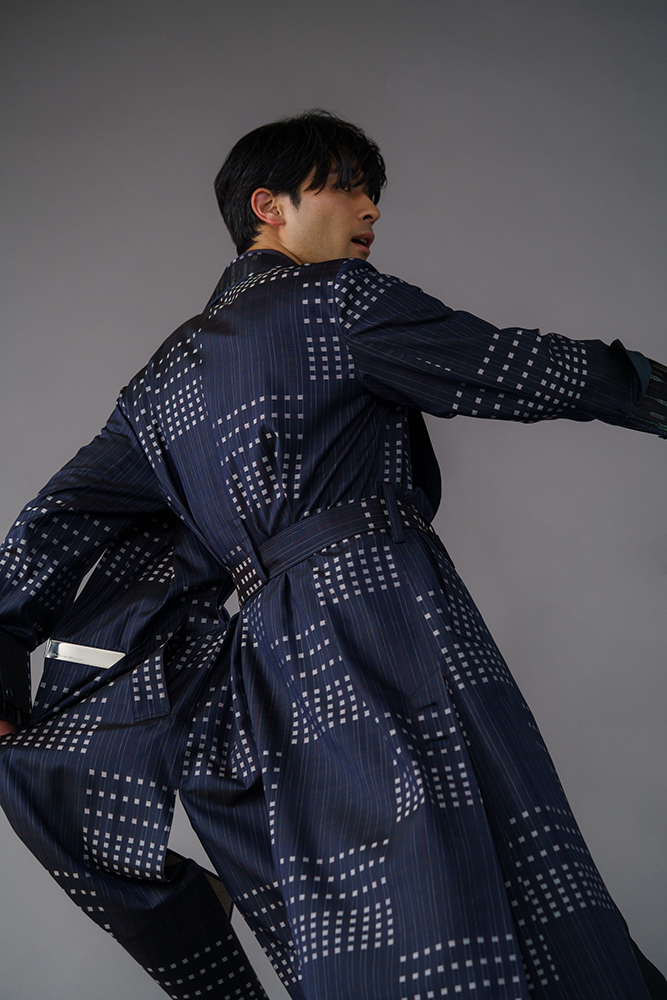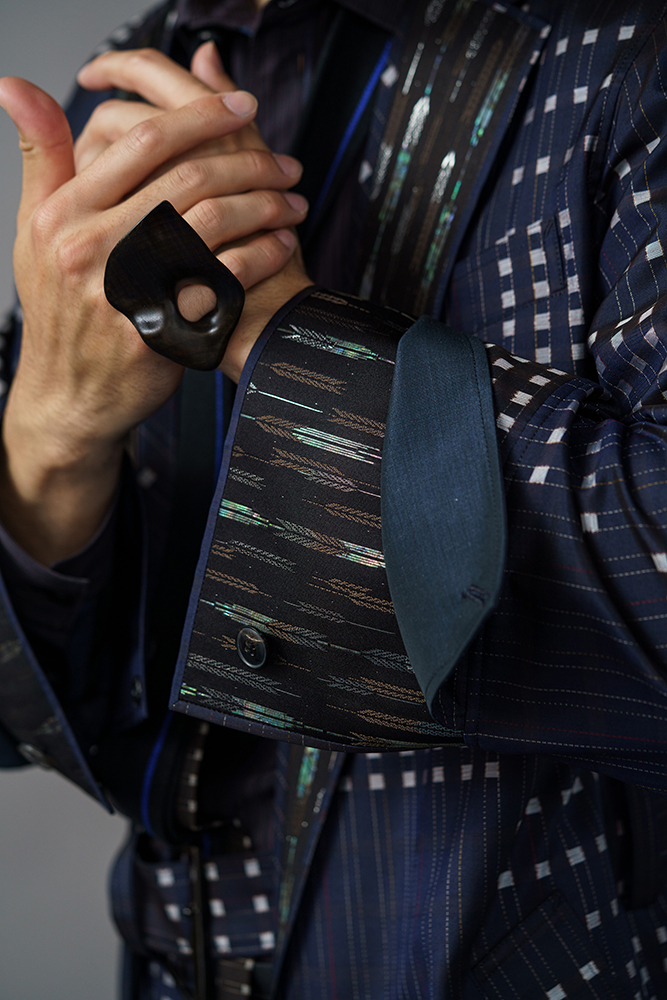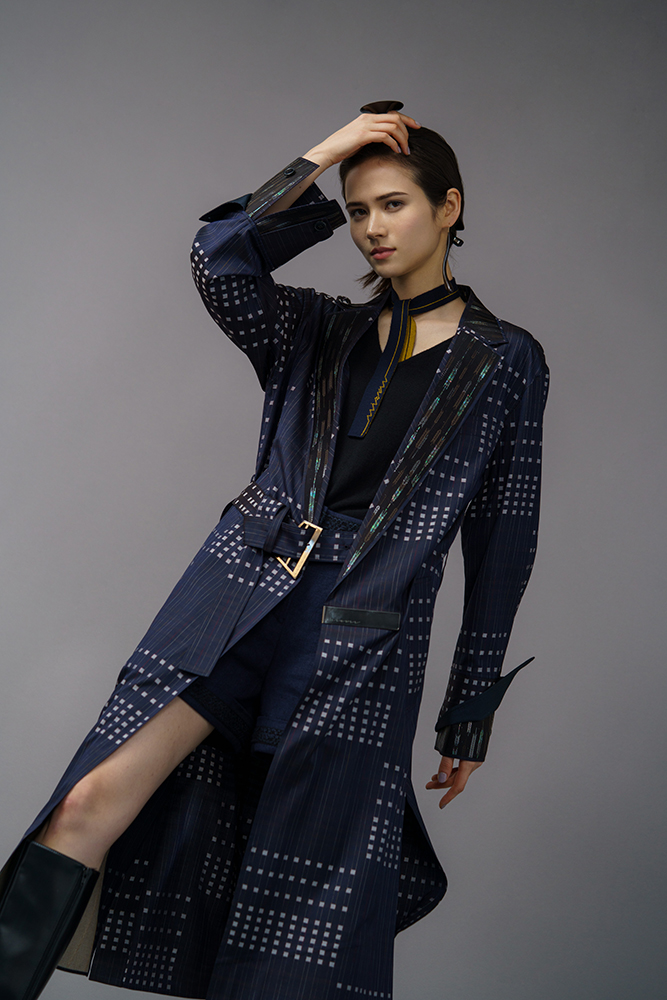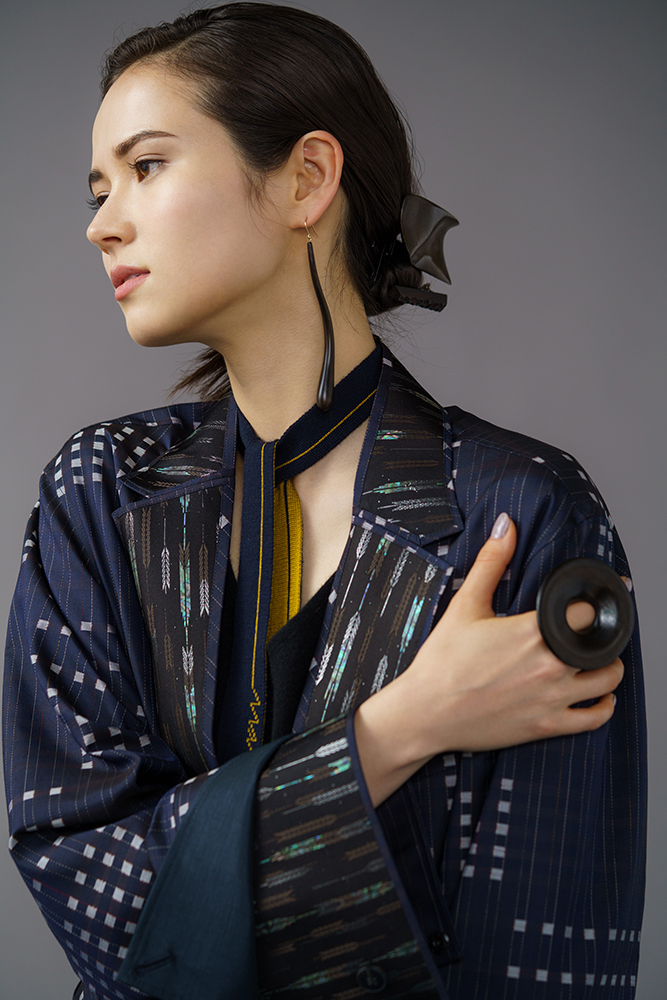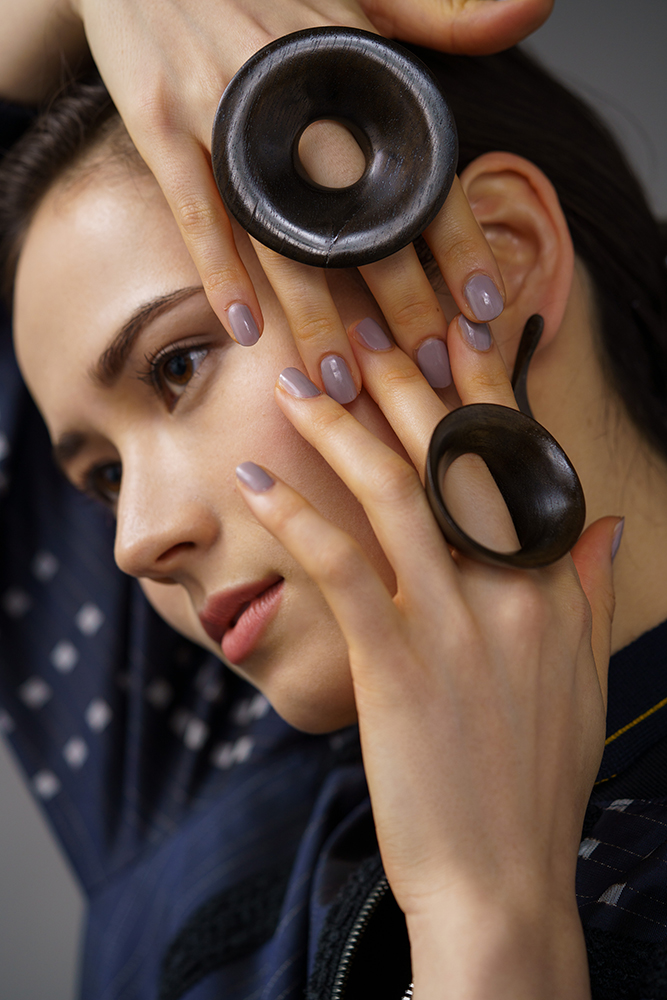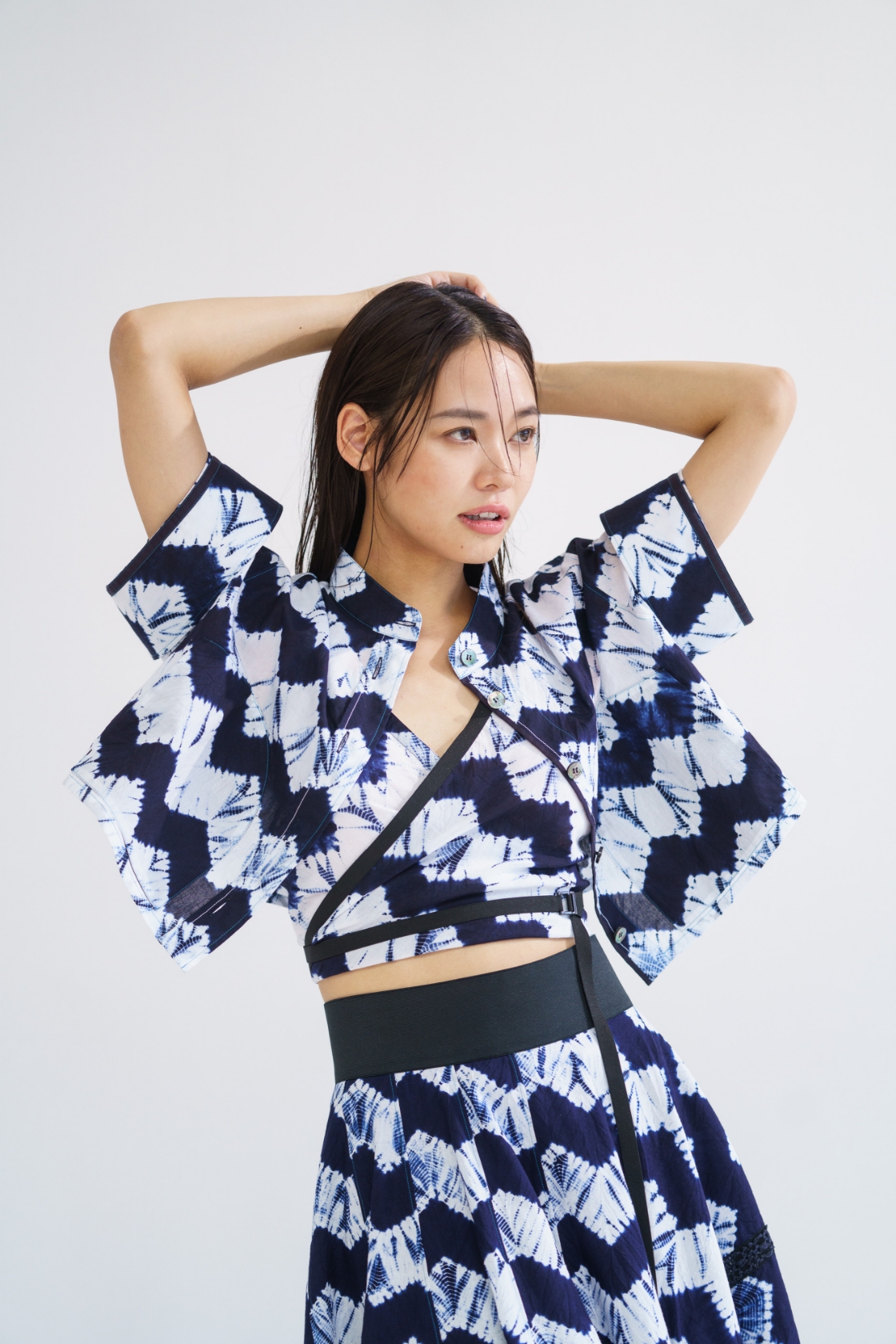HONBA OHSHIMA TSUMUGI
KAGOSHIMA PREF.
Craftsmanship and Beauty in Established Traditional Craft/ Unparalleled Beauty-Ikat and Mud-dyed Silk
Honba Oshima Tsumugi is a traditional craft designated by the Minister of Economy, Trade and Industry,
originating from Amami Oshima in Kagoshima Prefecture. It has long been immensely popular as kimono fabric,
credited to its beautiful luster and smooth texture, diverse patterns, and the world-class techniques behind them.
Though it's called Tsumugi (a type of silk fabric), in pursuit of delicate patterns, Oshima Tsumugi has evolved remarkably by switching from Tsumugi yarn to raw silk,
achieving a smooth texture and beautiful sheen. The 'Kasuri' created using a unique loom called 'Shimebata' is exceptionally fine compared to other Kasuri fabrics worldwide,
captivating many with its technically backed expressions. The mud-dyeing unique to Amami Oshima also plays a significant role in branding Oshima Tsumugi.
Despite its boom as a kimono fabric, Oshima Tsumugi faces production decline due to factors like inflation,
post-war shift away from kimonos, and aging craftsman, leading to a critical situation in technique succession.

Looms originated in Oshima
This is the design process of imprinting patterns onto each thread. Based on the design,
parts of the silk thread to be dyed (or not dyed) are identified and tied with cotton thread in the warp.
In subsequent mud-dyeing, the areas covered by cotton thread remain undyed and white. This creates the 'Kasuri (ikat) yarn'.
For complex patterns, each segment of the pattern must be tied separately. For creating Kasuri yarn,
Oshima Tsumugi undergoes a manual weaving process, which is why it's said to be ”Oshima Tsumughi is woven twice".
The product of this process is called 'Kasuri Mushiro' (Kasuri mat).
Sharinbai, Wheel Plum
The color 'Oshima Black', a significant feature of Oshima Tsumugi, is entirely hand-dyed.
A solution made from a plant called "taychiki" (also known as "sharinbai"(車輪梅) or wheel plum) reacts with the iron-rich mud,
which is unique to Amami Oshima, dyeing the fabric a distinctively astringent shade of black.
Mud-Dyeing
By repeatedly soaking in the decoction and mud fields, a distinctive black hue with a unique texture is achieved.
When the cotton threads of the finished Kasuri Mushiro are removed, the white parts are revealed, forming the intricate Kasuri patterns.
Weaving
The already patterned warp threads are accurately set up on the loom, and the patterned weft threads are inserted with a shuttle.
The weaving progresses while carefully aligning the patterns.
The tension of the threads is meticulously adjusted with a needle, finely correcting any misalignments in the pattern.
Afterward, only those that pass stringent tests for width and pattern uniformity are certified with a label, and then,
they are finally ready to be released to the market.

